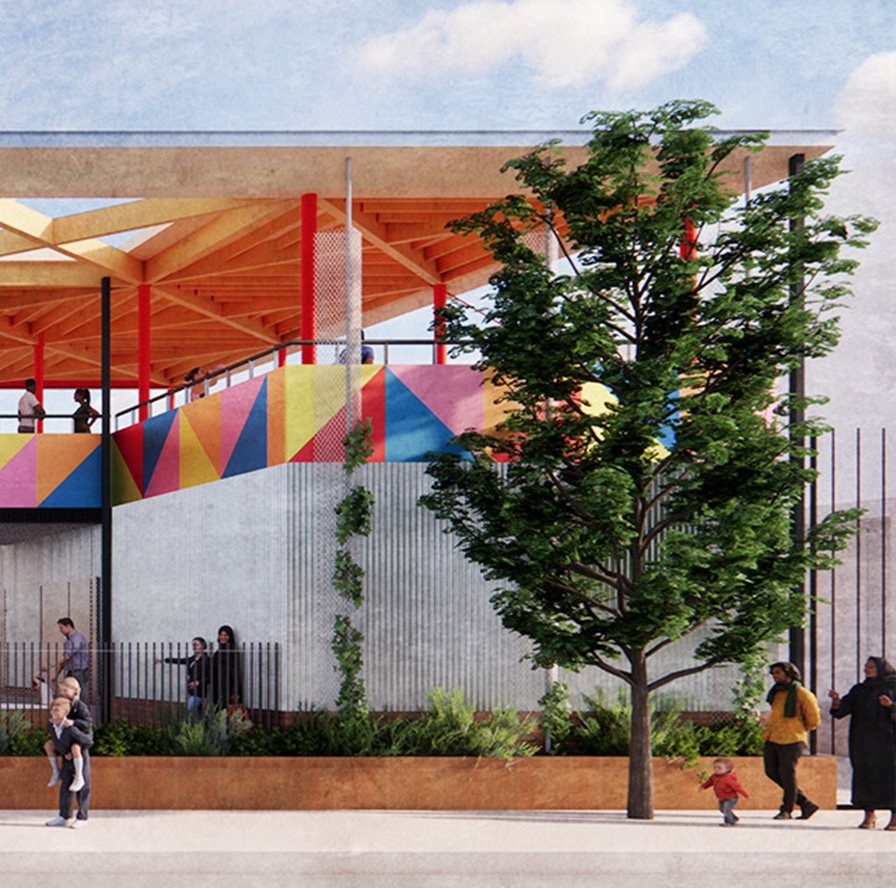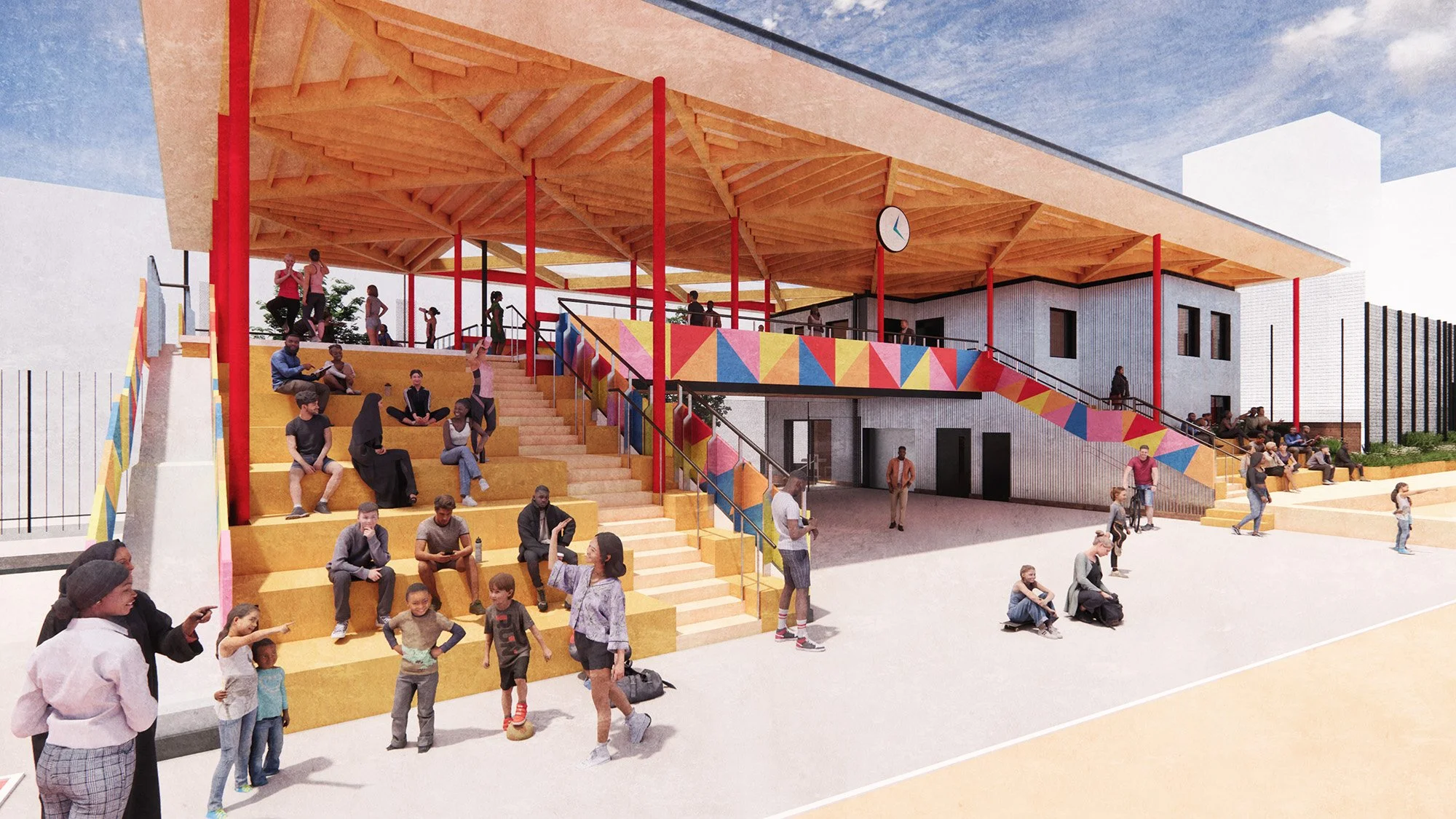Embodied carbon in buildings: How to measure it, how to minimise it
In the age of climate crisis, architects need to understand embodied carbon – and design it out of all new buildings. Here’s how we can meet the challenge…
Buildings account for some 49% of the greenhouse gas emissions in the UK. They emit carbon in two ways: through the energy consumed in their day-to-day use (operational carbon); and in their construction and disposal (embodied carbon). These are two very different kinds of problem and tackling each requires a different approach. But architects and designers have a critical role to play in both as we all attempt to meet the country’s ambitious carbon net zero targets.
The challenge of meeting operational carbon net zero in a building is essentially one of achieving an energy balance, so that the building’s energy consumption is reduced to the point where it can be covered by its own sustainable energy production (see Operational Net Zero Carbon for new buildings and Domestic retrofitting for operational net zero). There are well-established tools, technologies and methodologies such as the Passivhaus principles to help architects measure and achieve this operational energy balance.
But what about embodied carbon? The term refers to the total carbon emitted in producing a building’s materials, the transport and installation of those materials on site, and their disposal at end of life.
This is a complex issue for designers to understand, and the tools to measure embodied carbon are still in relative infancy. However, the industry is increasingly focusing attention on the problem. Leading the way is LETI, a network of over 1000 professionals working to put London’s building sector on the path to zero carbon. They have published a hierarchical framework of six actions, which provide a systematic approach for architects to design embodied carbon out of a new building.
In simple terms, these actions are: build less; build light; build wise; build low carbon; build for the future; and build collaboratively.
Designing for reduced embodied carbon - a worked example
Cullinan Studio have applied this framework to one of our newest projects: the Marlborough Sports Garden, a project for the Bankside Open Spaces Trust that aims to provide a freely available, state-of-the-art mixed sports facility for local children and young people, particularly those who are living in poverty.
1) Build less
Before starting a design, the architect has a duty to challenge and interrogate the client’s brief. Does it really represent the most efficient solution to meet the client’s needs? Is a new building necessary or can retrofit be considered? Are all the proposed materials needed; what can be reused or renovated? Can spaces be multifunctional or shared? Can the design be simplified?
From the start of the Marlborough Sports Garden project the Cullinan Studio design team knew that a lean, efficient and multifunctional building on a small footprint was the priority. They also identified numerous areas where existing materials could be reused, such as reclaiming a boundary brick wall to be used as hardcore to build up the level of the foundation.
2) Build light
The architect should examine and review structural loadings and spans. What loadings are really required to meet the brief? Can long spans be restricted? The weight of dead loads should be reduced where possible.
We have designed the Marlborough Sports Garden's community hub building to allow for minimal excavation and foundations. By using a timber frame we have reduced the need for heavier materials such as steel and concrete.
Proposed Marlborough Sports Garden community hub building
3) Build wise
The architect should consider the longevity of material and system specifications, and explore using material efficiency options like designing to standard building sizes or for a repeating module.
It’s important for designers to understand about the relative proportions of embodied carbon carried by different elements of the building including ‘big ticket’ items – the elements of the building that are most carbon-intensive – and ‘small ticket’ items that repeat.
By using reclaimed hardwood timber, the structure (one of the ‘big ticket’ items) of the Marlborough Sports Garden building will be a low carbon, environmentally friendly solution. A standard grid will produce standard modules that reclaimed materials can be adapted to suit.
4) Build low carbon
Designers should identify those ‘big ticket’ items such as the structure and envelope, and focus on minimising their carbon emissions for big wins. They should default to specifying low-carbon, renewable, bio based, re-used or recycled materials from responsible sources; and explore Design for Manufacture and Assembly (DfMA) solutions if this reduces embodied carbon.
This diagram shows the typical proportions of embodied carbon per element in various types of building: the sub and superstructure; facade (and roof); internal finishes and Mechanical, Electrical and Plumbing - diagram c. LETI, reproduced from the LETI Climate Emergency Design Guide
Reused materials make up a large proportion of the material choices being explored for the Marlborough Sports Garden building, including steel sections and gas pipes, treated reclaimed sheet metal for cladding, and timber from Ashwells Reclaimed Tropical Timber Yard.
Reclaimed hardwood timber in storage outside London
5) Build for the future
Buildings should be designed for durability, flexibility and adaptability, ensuring that the building can easily be reconfigured as technologies and the needs of users evolve. They should also be designed with end of life in mind, so that parts can easily be disassembled and reused: for example, systems should be mechanically fixed rather than adhesive fixed so they can be demounted and re-used or recycled.
The construction detailing at Marlborough Sports Garden will be ready for deconstruction, and we will avoid any treatments that render the material unusable for recycling or reuse.
6) Build collaboratively
As well as widely consulting with the local community and building users, architects should work with the entire design team and the client at every stage of the process. Finding the optimum solutions for minimising carbon requires transparency and the sharing of knowledge, data and ideas with all parties across the different design areas.
Collaboration is a core Cullinan Studio principle. We consulted widely with the local community and users of the Marlborough Sports Garden through extensive surveying and forums.
Measuring embodied carbon
One of the key challenges for architects is to evaluate the embodied carbon impact of different design options, so they can choose between them.
The basic principle of calculating embodied carbon is to multiply the estimated quantity of each material or product by a carbon factor (normally measured in kgCO2 e per kg of material). This carbon factor estimate is based on a material or product’s lifecycle stages. That is, on an estimate of the amount of carbon released at each stage of its life: its production; transport from the factory gate to the site; the waste associated with its construction installation; and the energy used on site in the construction process.
This sounds complex – but with the right information it is possible for architects to make good estimates of an entire structure from very early on in the design process, enabling them to design for minimum embodied carbon from the outset rather than having to find reactive solutions or make sacrifices and compromises later on.
Whole Life Carbon
However, measuring embodied carbon – as complicated as it may sound – is actually only one part of the picture. If we are to really achieve net zero in a building, architects taking on projects will need to simultaneously consider both the embodied carbon and the ongoing operational carbon emissions the building will produce.
This is the concept of Whole Life Carbon, which LETI defines ‘the sum total of all asset related greenhouse gas emissions and removals, both operational and embodied over the life cycle of an asset including its disposal.’
Incorporating Whole Life Carbon estimates into project designs is a yet another multi-dimensional puzzle for architects. Methodologies such as the FCBS CARBON tool can help us to take a systematic, data-driven approach. But designing buildings that meet the client’s brief, that are useful and beautiful as well as Whole Life Carbon net zero, requires not only scientific information but innovation, imagination and collaboration.
Between them, Cullinan Studio’s partners have a wide range of skills and diverse specialisms – including in evaluating embodied carbon, operational net zero, Passivhaus design and retrofitting. Our cooperative structure and culture of collaboration means that we can take on complex projects as a multi-skilled team, and rise to the new challenges facing architects and the building sector in the age of climate crisis.
If you would like more information on embodied carbon, Whole Life Carbon or any of the issues raised in this post, contact us.






